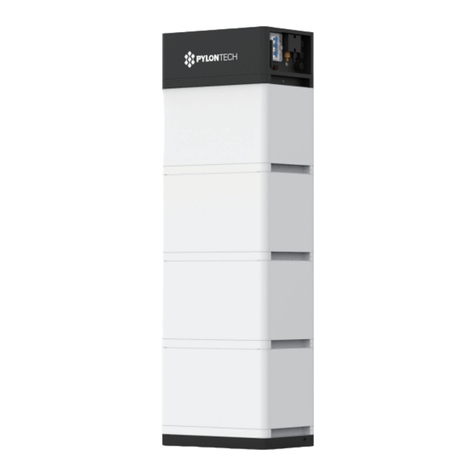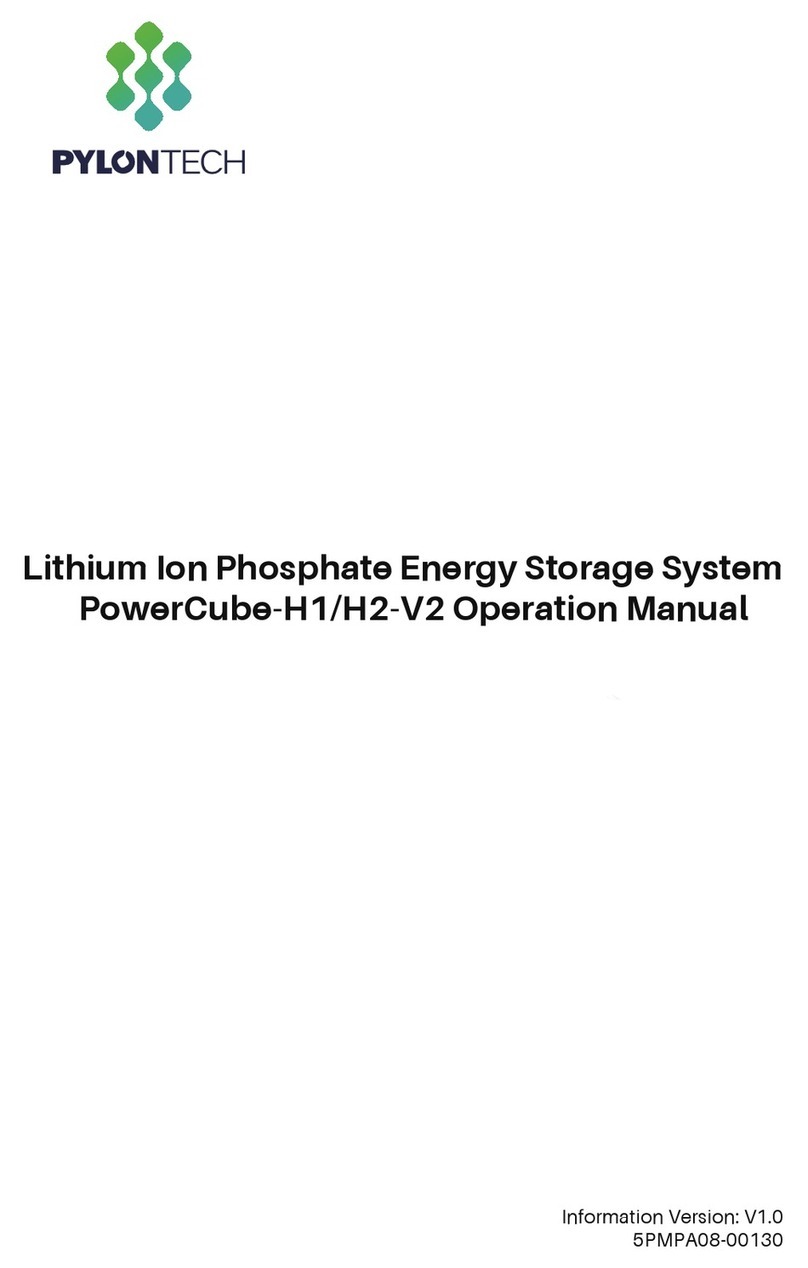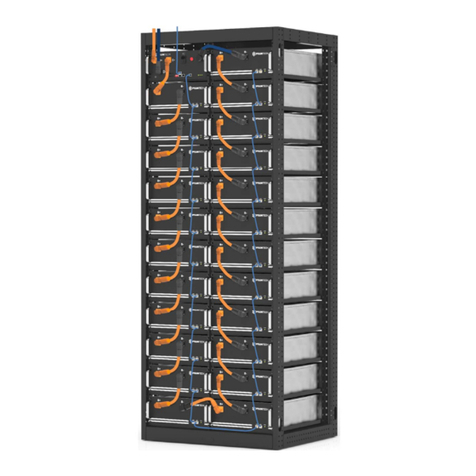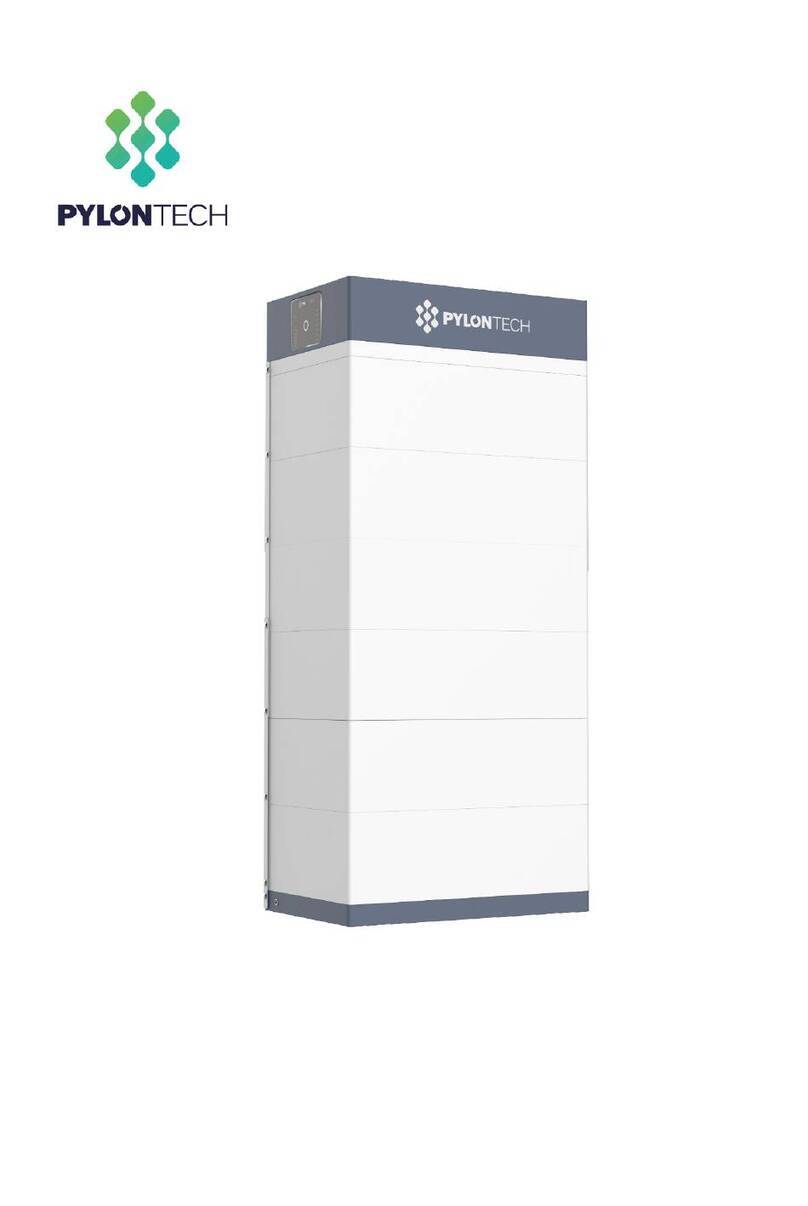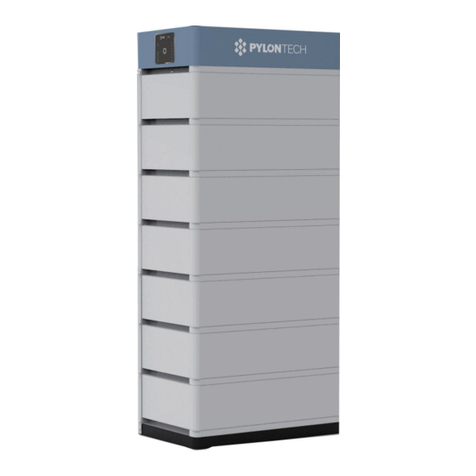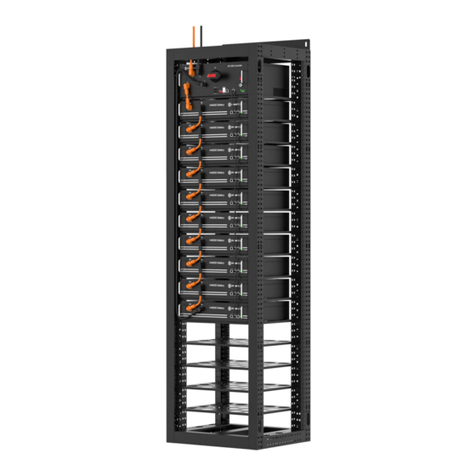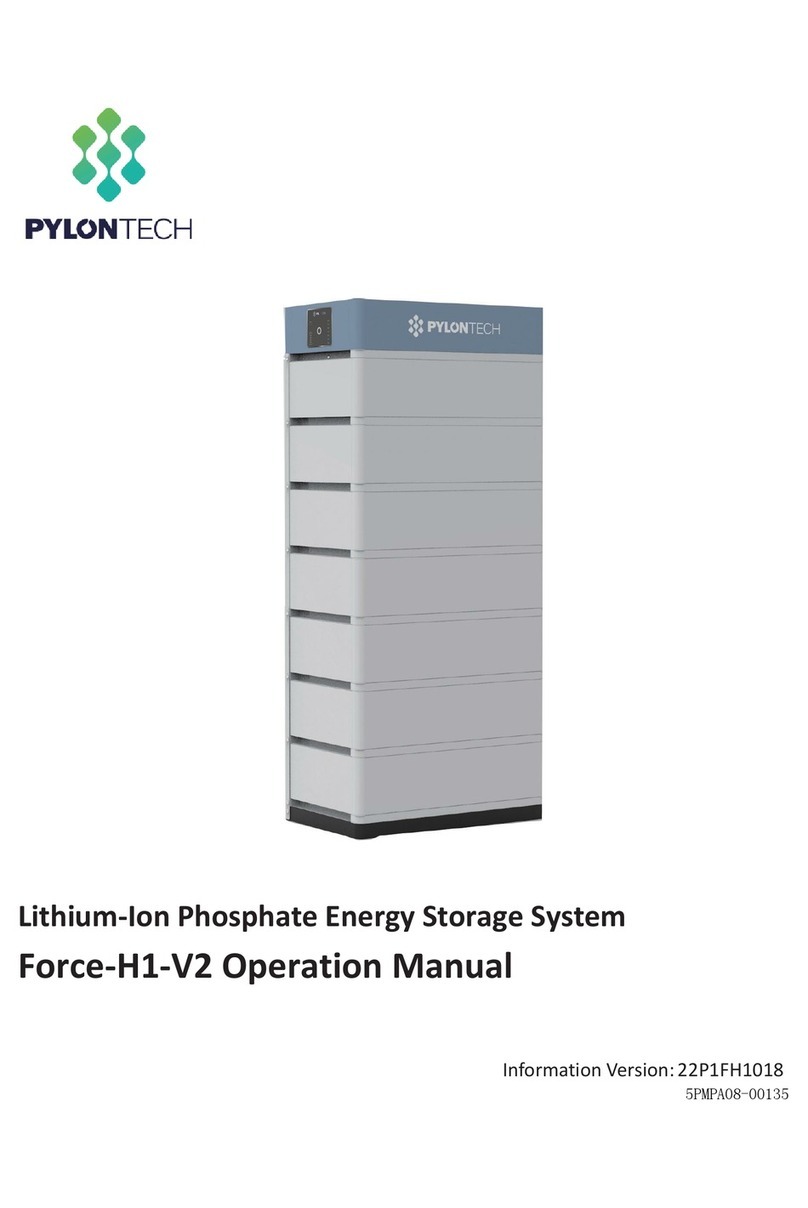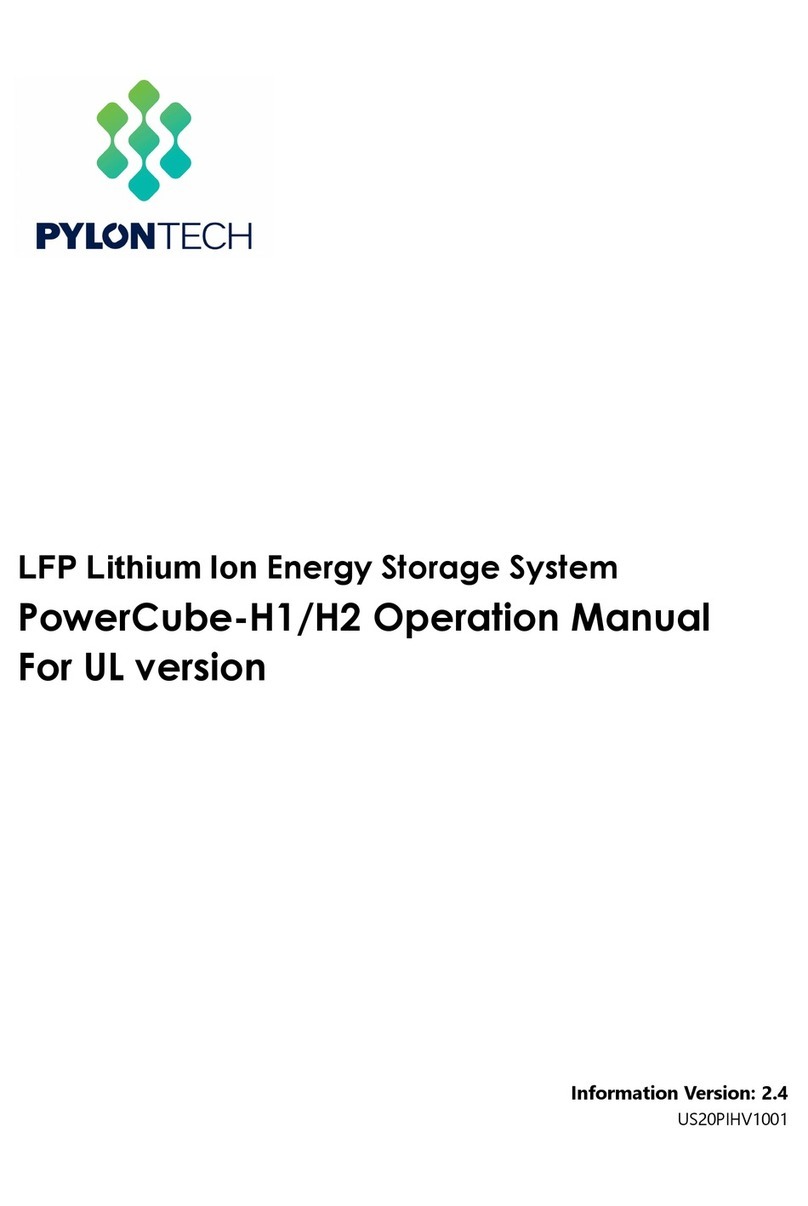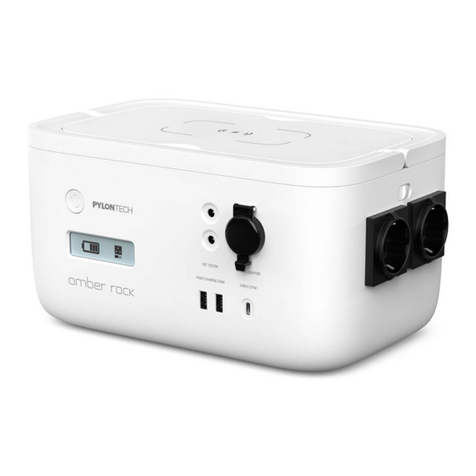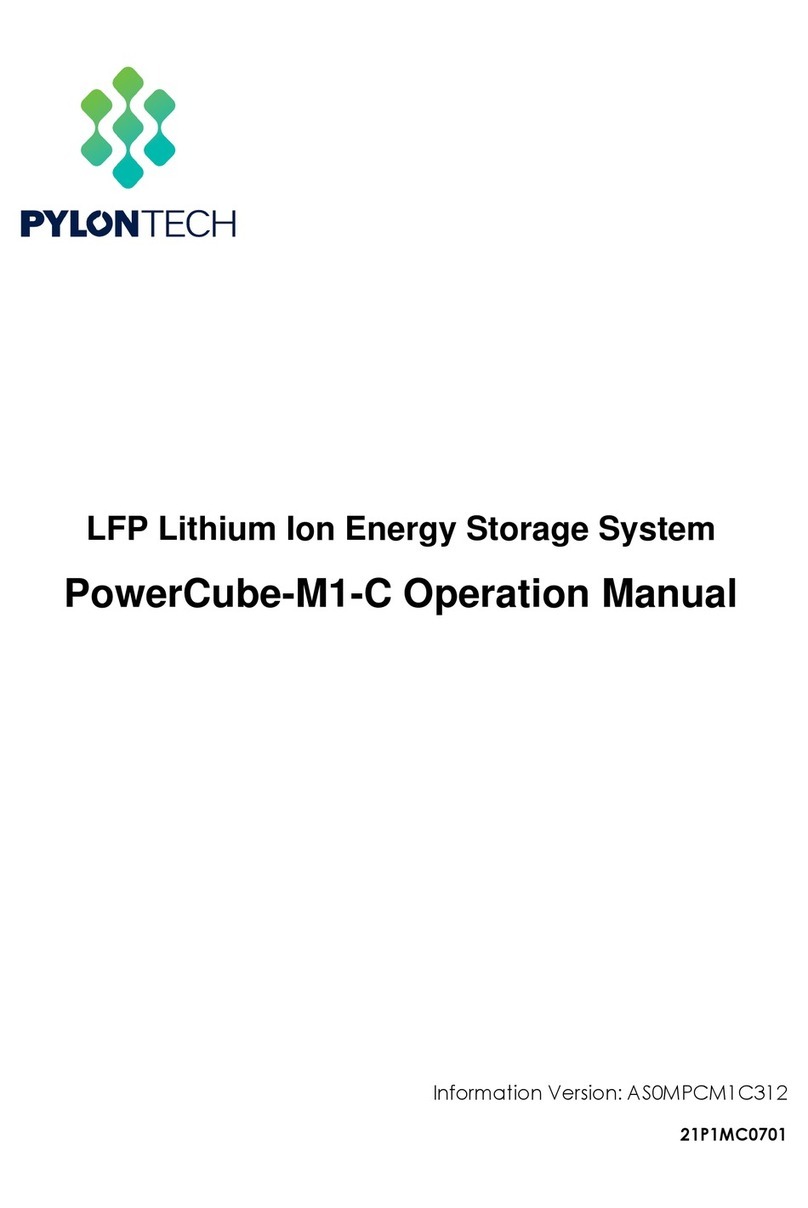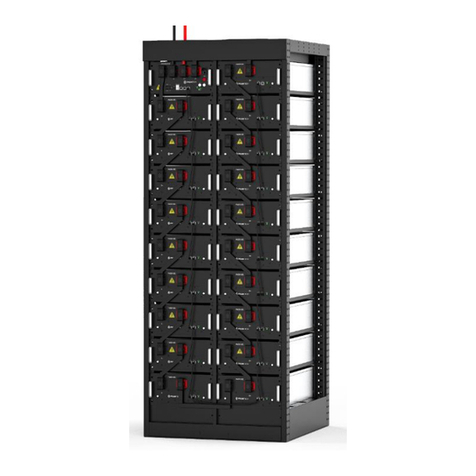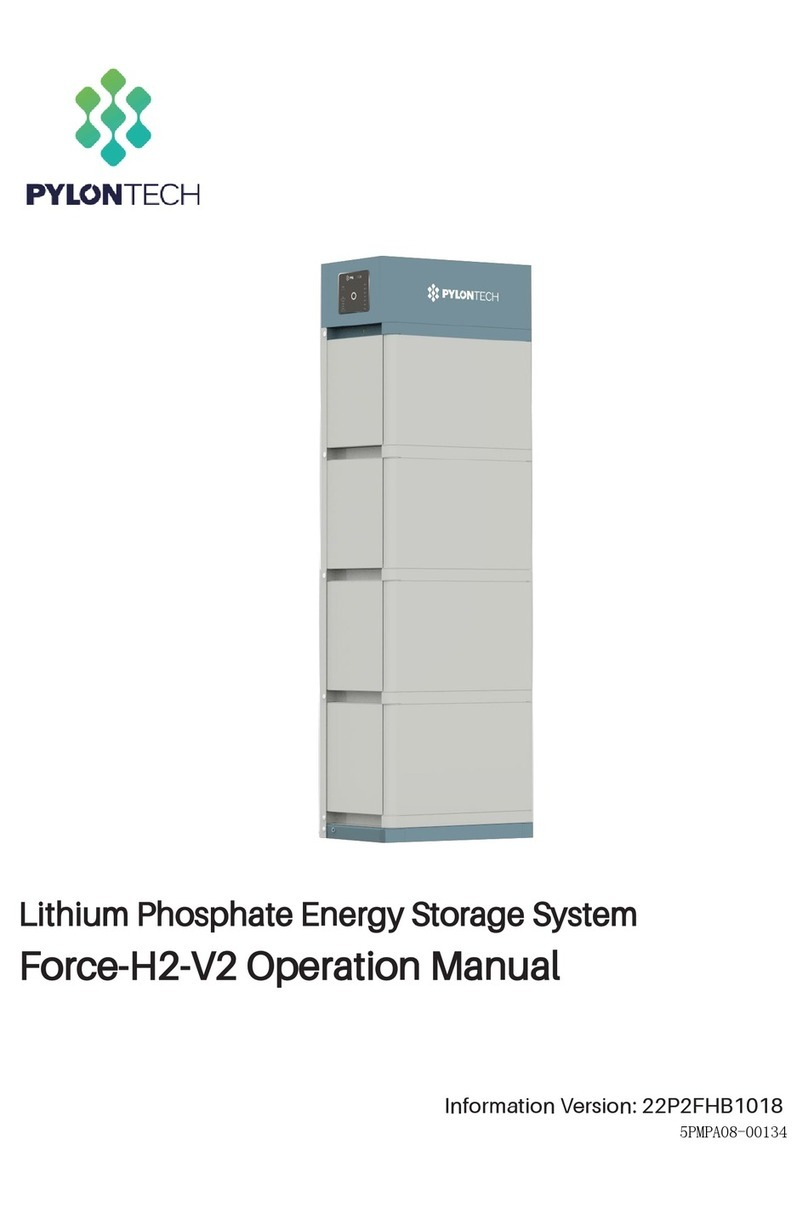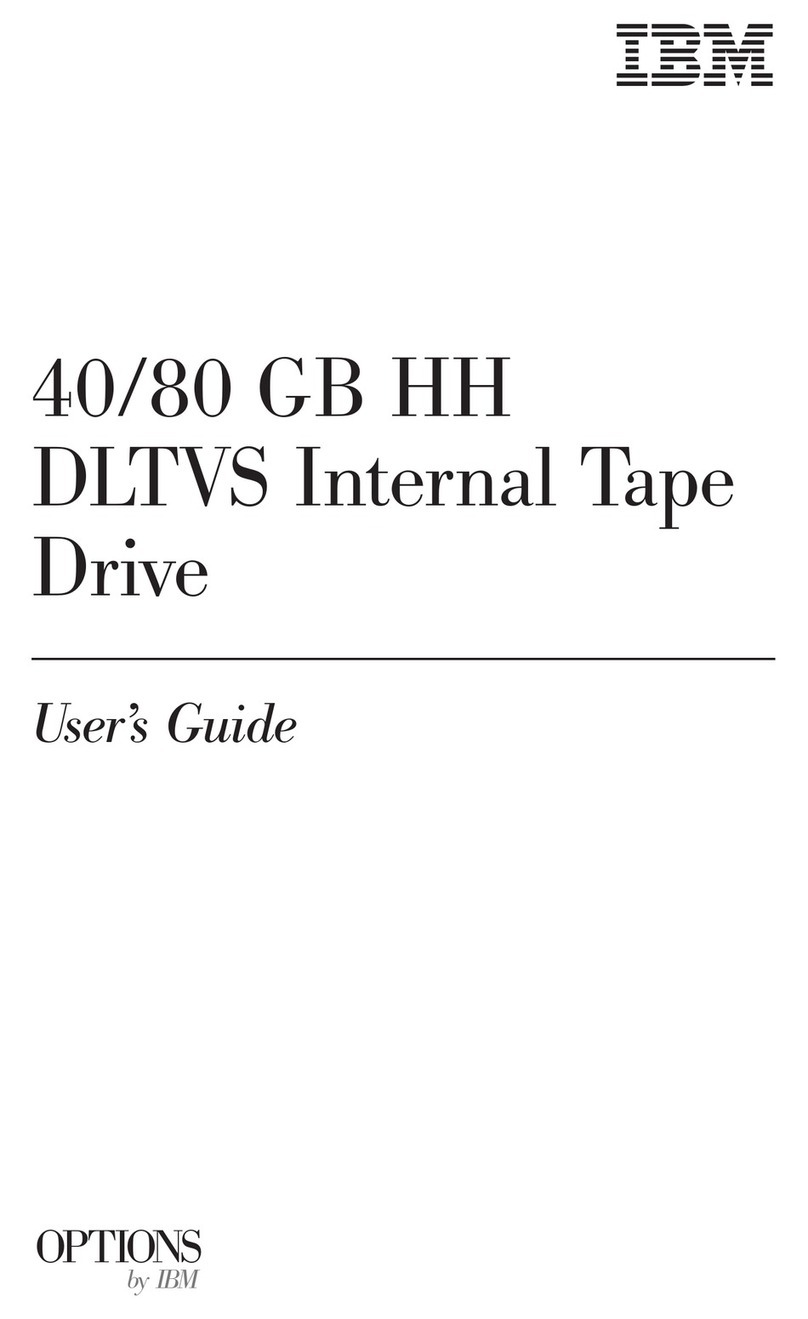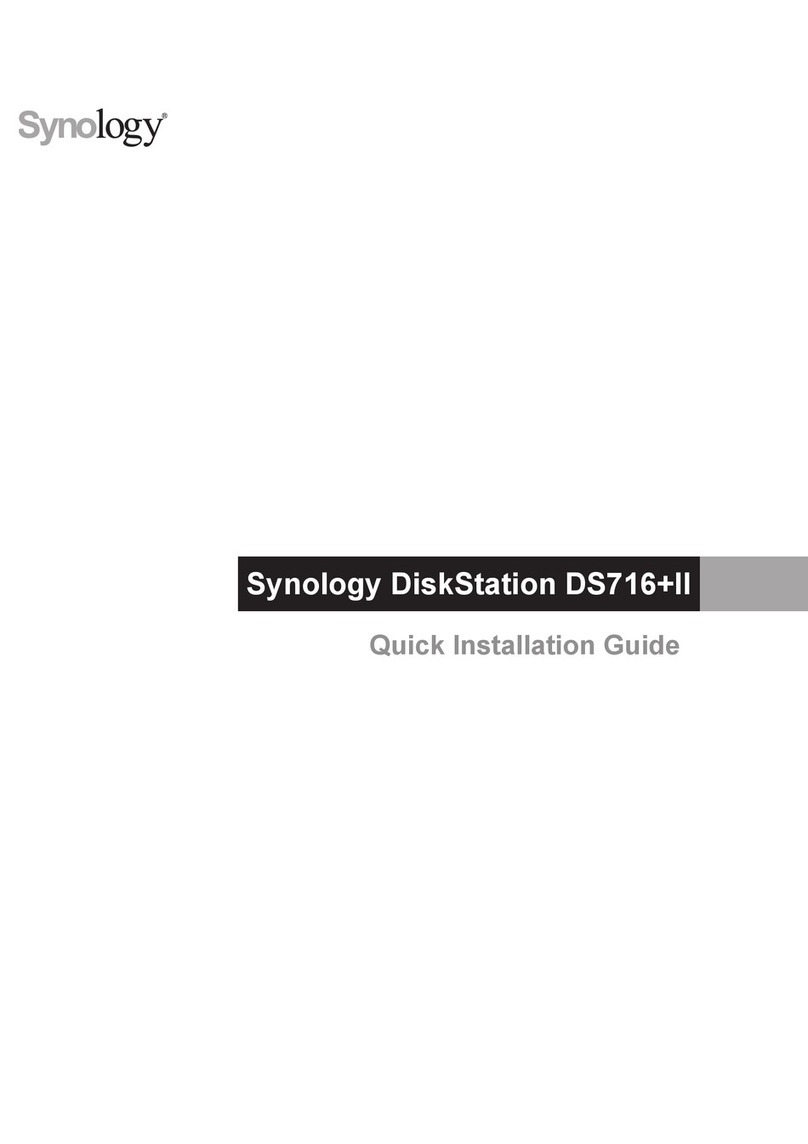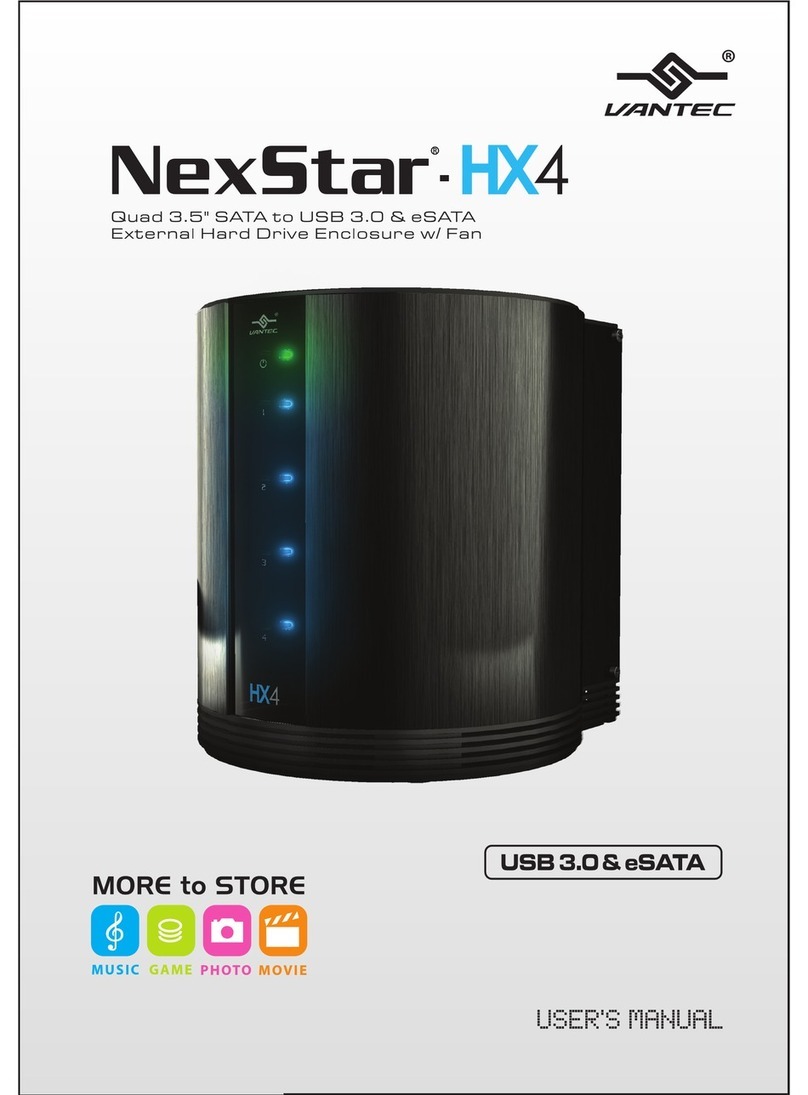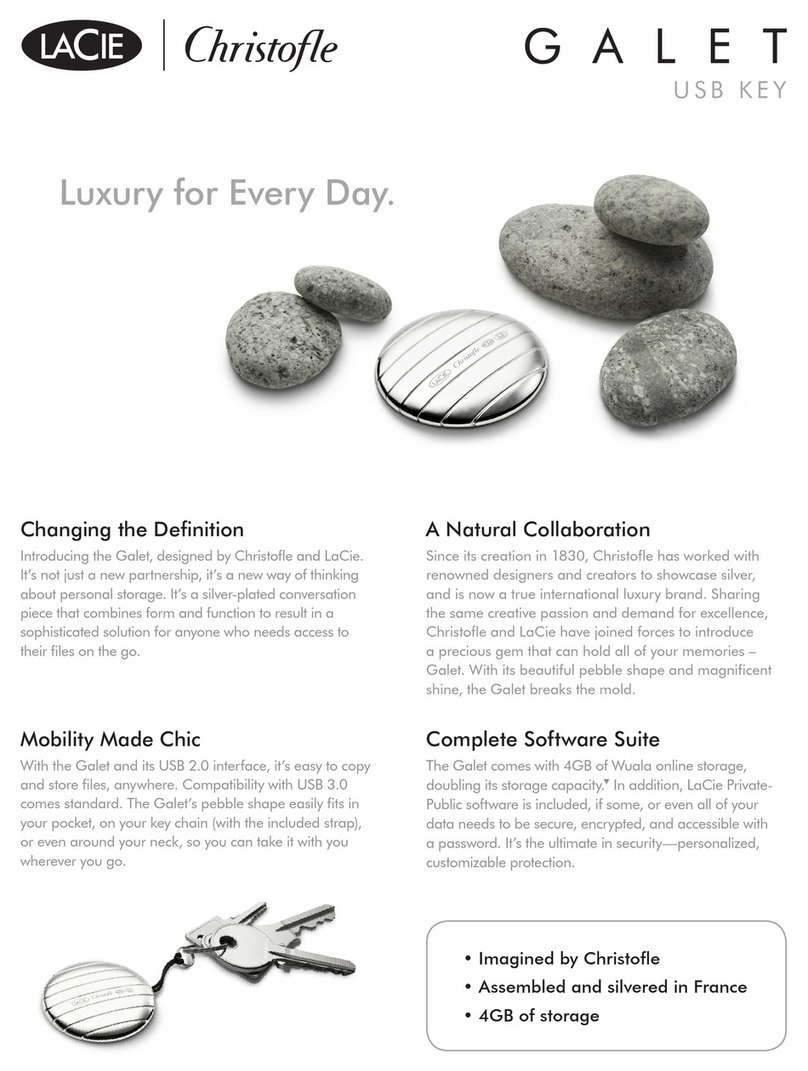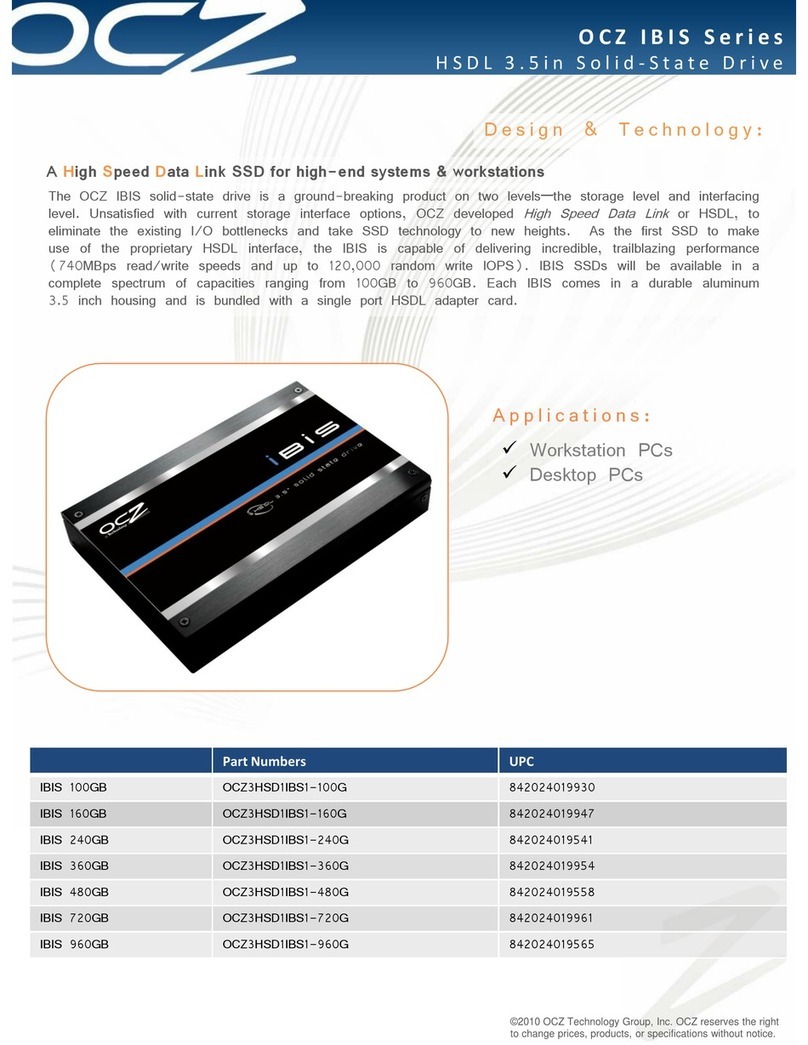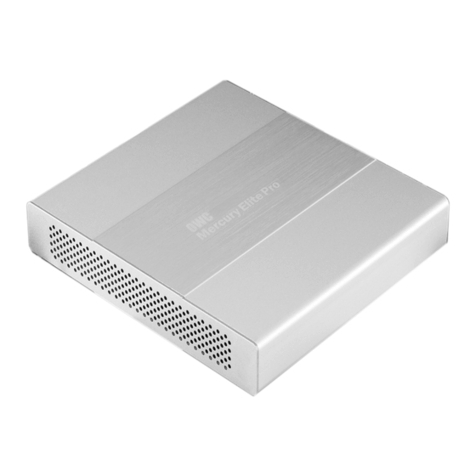Content
1. Safety ................................................................. 1
1.1. Symbol...................................................................................................................................................................1
1.2. Reference standards ..............................................................................................................................4
2. System Introduction .................................................... 5
2.1. System description .................................................................................................................................5
2.2. Specification ...............................................................................................................................................6
2.3. System Specifications.........................................................................................................................7
2.4. Battery Module Specification .....................................................................................................8
2.4.1. H48050..................................................................................................................................................................................8
2.4.2. H48074..................................................................................................................................................................................9
2.4.3. Battery Module Front Interface............................................................................................................... 10
2.5. Control Module Specification ...................................................................................................11
2.5.1. Control Module Front Interface............................................................................................................... 11
2.6. System Diagram ..........................................................................................................................................15
2.6.1. System Diagram without MBMS via CAN ................................................................................................. 16
2.6.2. Diagram between Control Module and Battery Modules ......................................................... 16
3. Installation .......................................................... 17
3.1. Installation tools ...............................................................................................................................17
3.2. Safety Gears ................................................................................................................................................18
3.3. Working Environments..........................................................................................................................20
3.3.1. Cleaning.......................................................................................................................................................................... 20
3.3.2. Temperature ................................................................................................................................................................. 20
3.3.3. Cooling System ......................................................................................................................................................... 20
3.3.4. Heating System ......................................................................................................................................................... 20
3.3.5. Grounding System .................................................................................................................................................... 20
3.4. Package Items .............................................................................................................................................22
3.4.1. List of the accessories in the package ......................................................................................... 22
3.4.2. DC Power Cable ......................................................................................................................................................... 23
3.4.3. Communication Cable ............................................................................................................................................ 24
3.5. Mechanical and Electrical Installation.......................................................................25
3.5.1. Installation Notes............................................................................................................................................... 25
3.5.2. Mechanical Installation of the battery rack. ......................................................................... 25
3.5.3. Mechanical Installation of the battery module ...................................................................... 26
3.5.4. Mechanical Installation of the control module ...................................................................... 26
3.6. Cable Connection.....................................................................................................................................26
3.6.1. Caution ............................................................................................................................................................................ 26
3.6.2. Grounding....................................................................................................................................................................... 26
3.6.3. Internal power and communication cable connection within Rack ........................... 27
3.6.4. Communication wiring connection of master and slave controller......................... 28
3.7. Process of System Turning On ...................................................................................................32
3.7.1. Notes.................................................................................................................................................................................. 32
3.7.2. Detail Steps............................................................................................................................................................... 32
